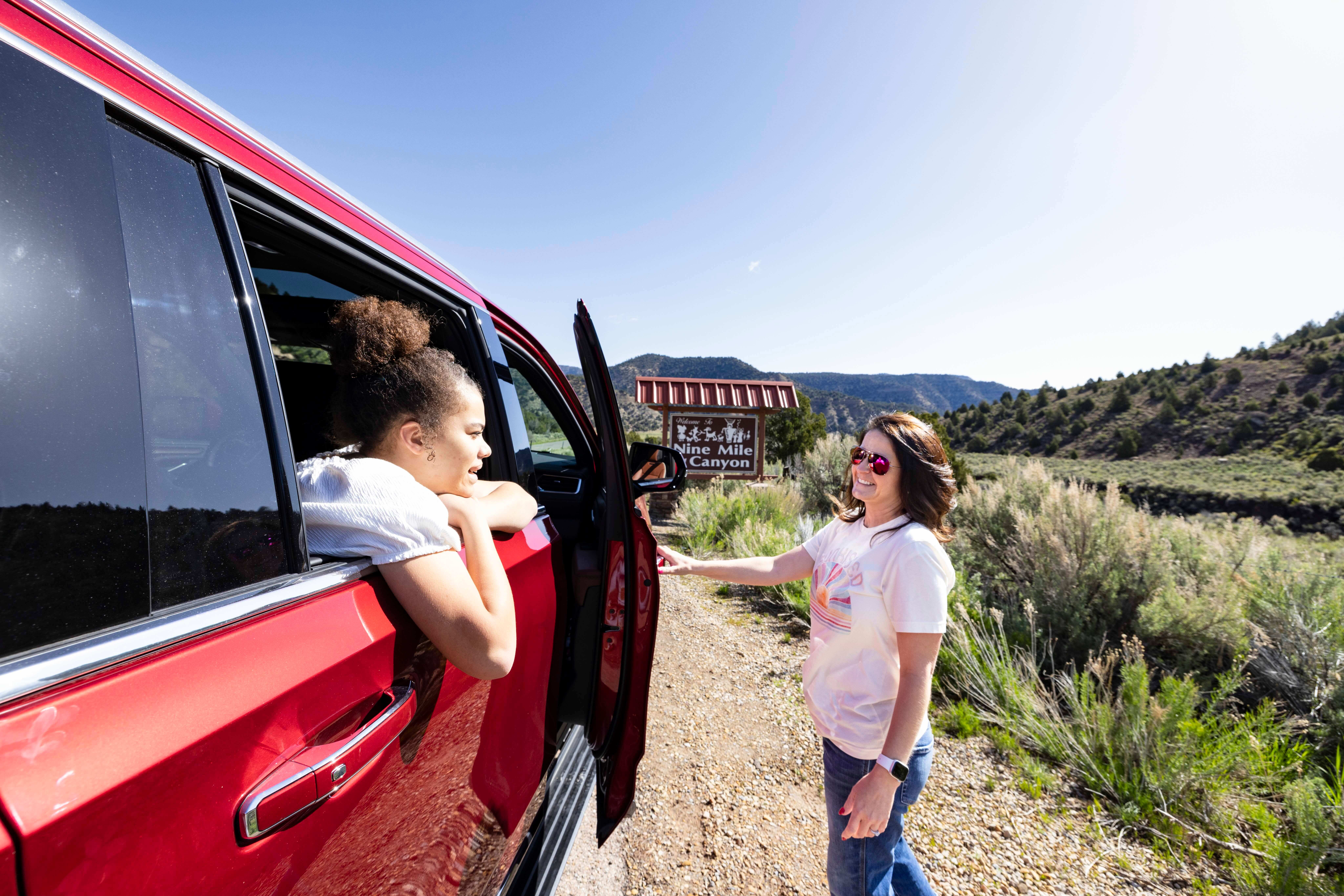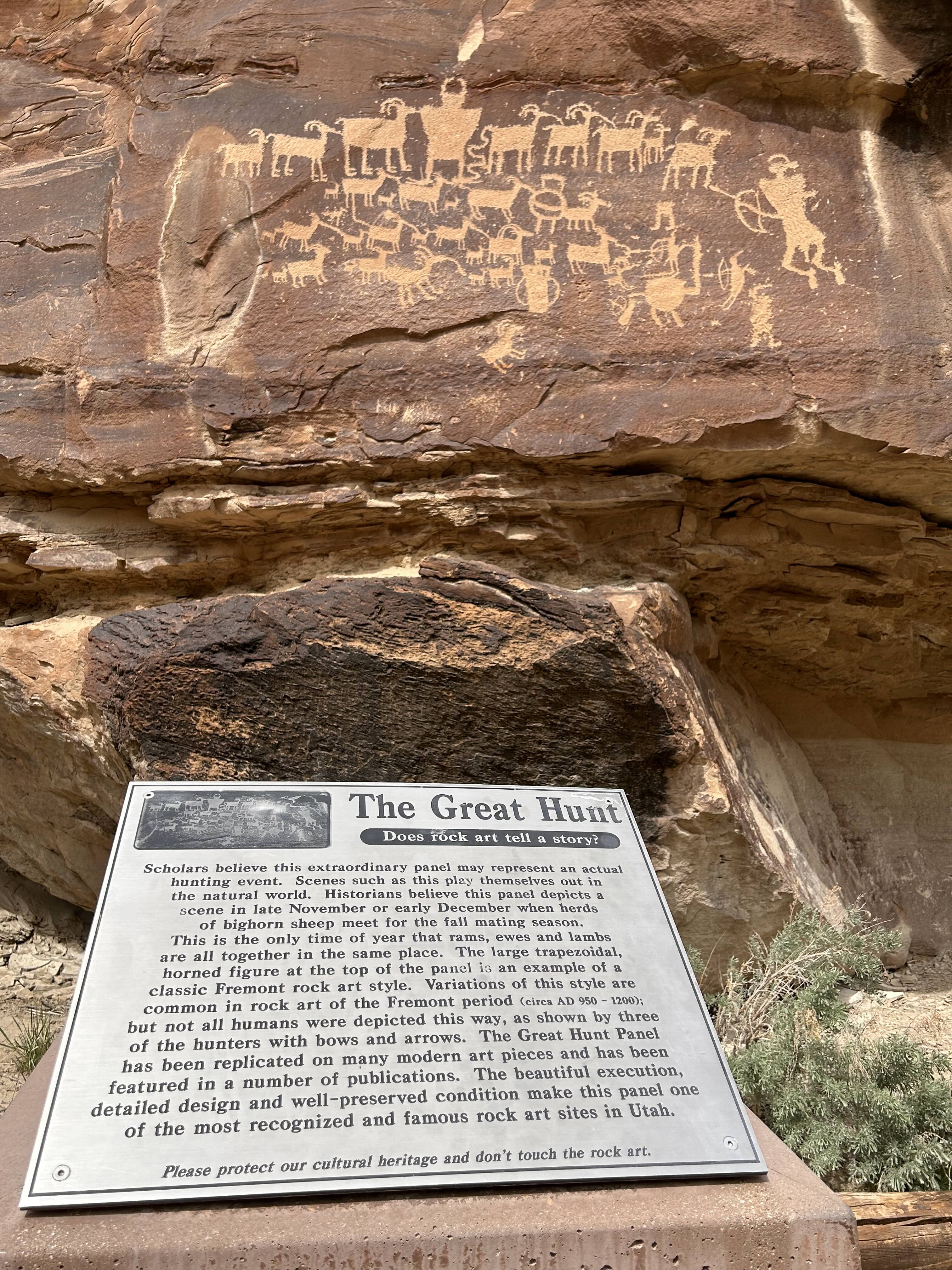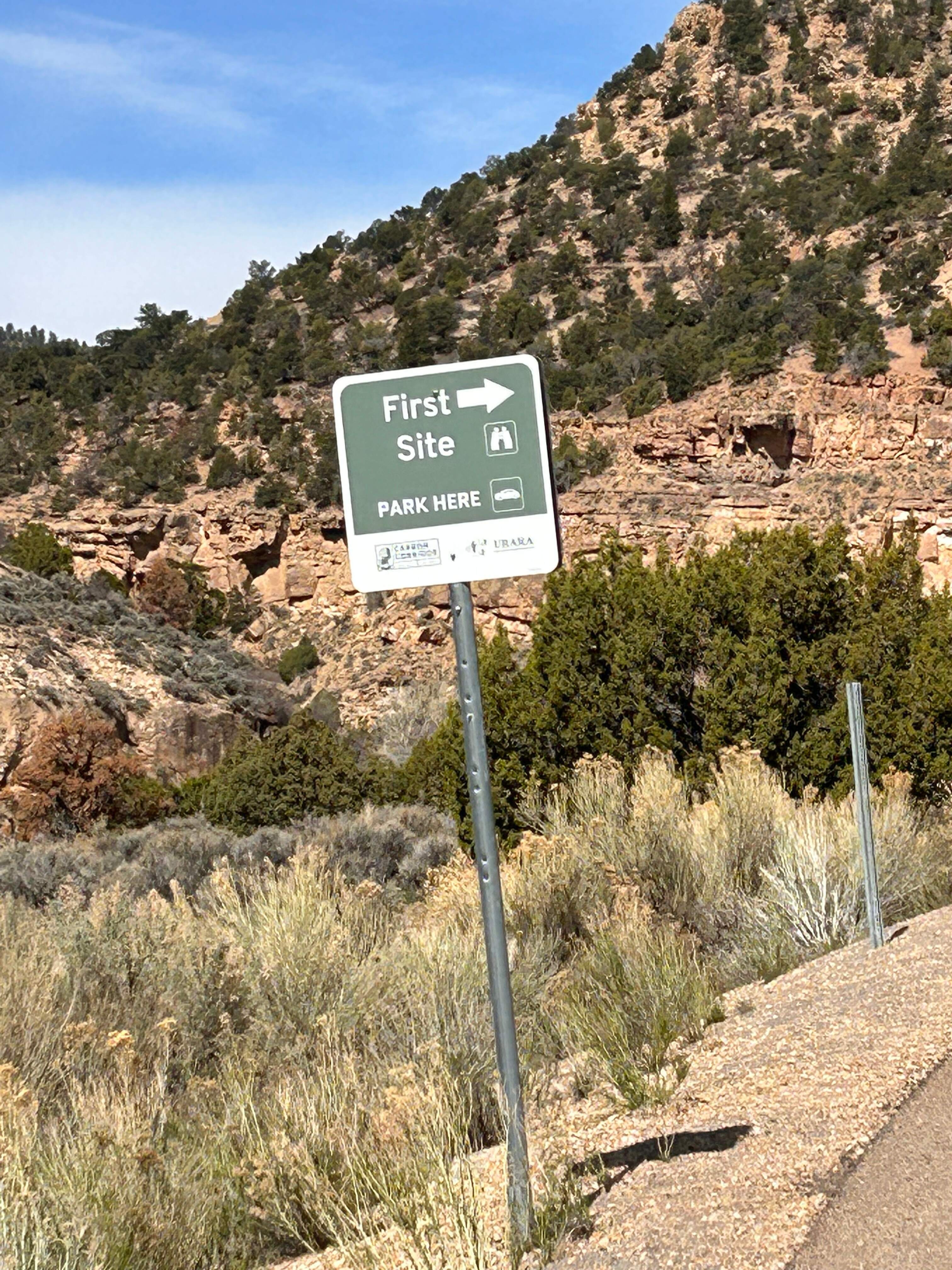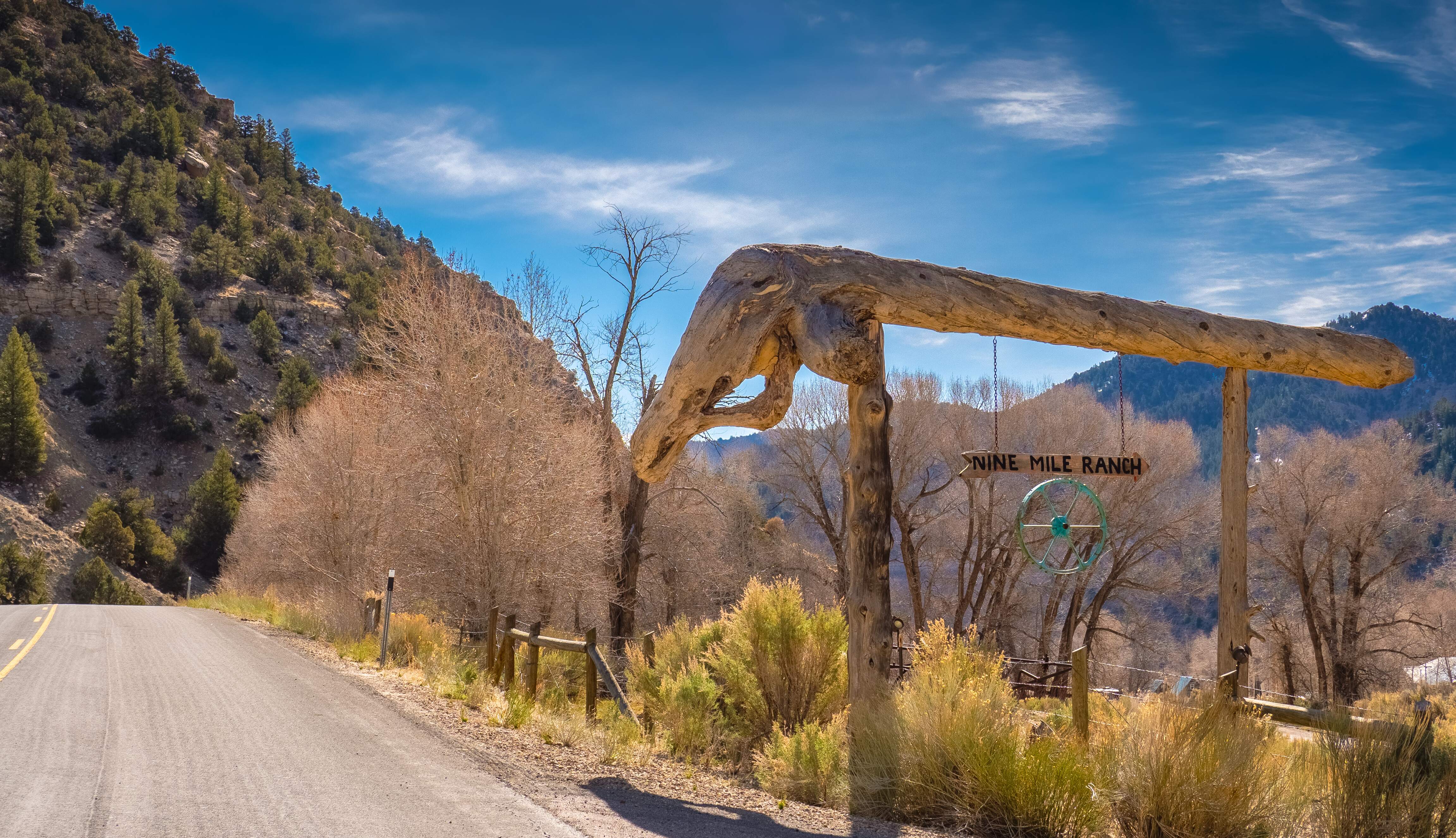Renowned worldwide as the world's longest outdoor art gallery, Nine Mile Canyon stands as a testament to Utah's rich cultural and historical legacy. This iconic site is nestled between the towns of Price and Myton, within the Carbon Corridor of Central-Eastern Utah. The 46-mile-long Nine Mile Canyon Road takes you on a scenic journey into the heart of the Book Cliffs, unveiling thousands of years of history and human expression.
To make the most of your visit, we’ve gathered all the necessities so you are fully prepped for a trip to Nine Mile Canyon.
Why Nine Mile Canyon
A true gem in Central Utah, Nine Mile Canyon offers a unique blend of history, nature, and culture that is not to be missed. Formed by the forces of the Fremont River, the Canyon has been a canvas for countless stories throughout history.
Accessible to visitors of all ages and mobilities, this incredible site can be explored either on foot, hiking through the area's breathtaking landscapes, or by car with a free audio tour, so you don’t miss a site as you drive into the canyon. With no entry fees, Nine Mile Canyon is an affordable and memorable adventure for all ages.
Embark on the Daddy Canyon hike, a one-mile journey that allows visitors to marvel at ancient petroglyphs up close. The petroglyphs and rock art found in this area are over 1,000 years old and hold significant historical value.
While gazing at petroglyphs you'll discover Utah's captivating history through the lens of both early settlers and ancient artists who left their mark on the canyon walls. Being in close proximity to Utah’s Mighty Five parks like Capitol Reef and Arches National Parks, travelers can start their trip in the Corridor at Nine Mile Canyon and head south to more Utah gems.

Nine Mile Canyon Welcome Sign
How to Get There
Tucked away in Central Utah and without cell phone service, the journey to Nine Mile Canyon is an adventure in and of itself. Make it a road trip by starting in Moab, Salt Lake City or Grand Junction. More adventurous travelers can make their journey to Nine Mile more reminiscent of the area’s history by traveling by train.
From Salt Lake City: Take a scenic drive southbound for approximately two hours to reach the Carbon Corridor. Get directions here.
From Moab: Head northwest and enjoy the breathtaking landscapes for about two hours and fifteen minutes before arriving at the Carbon Corridor. Get directions here.
From Grand Junction: Embark on a two-and-a-half-hour journey westbound to discover the wonders of the Carbon Corridor. Get directions here.
For international travelers: Fly into Salt Lake City International Airport and rent a car to experience the stunning drive to the Carbon Corridor and into Nine Mile Canyon.
Take the train: History enthusiasts can take the Denver and Rio Grande Railroad connecting Colorado to Utah for a scenic ride via Amtrak. Trains come right into Helper, UT, from Denver, CO, or Salt Lake City, UT. See tickets here.


What to See
While visiting Nine Mile Canyon, there's plenty to see and explore. With over 1,000 cataloged sites and 1,000 years of history, the canyon offers a unique glimpse into the past. As you drive into the Canyon you will see signs marking historical sites to pull off and learn more about petroglyphs in that area.
Petroglyphs
Marvel at the ancient rock carvings and paintings left behind by the Fremont and Ute people. These images offer a fascinating look into the lives and beliefs of the canyon's early inhabitants.
Immerse yourself in the rich narratives depicted through rock art. From hunting scenes to spiritual symbolism, these images tell the stories of the people who once called Nine Mile Canyon home.
Notable Sites
Some must-see locations include the Big Buffalo Panel, Cottonwood Glen, and the historic homestead at the entrance of the canyon. Each site offers a unique perspective on the canyon's history and culture. Being 46 miles long, there are many notable sites. Download the guided audio tour to listen to as you drive through the canyon. Guided tours are also available through the Carbon County Recreation Office. Visitors can call ahead to book a tour of Nine Mile Canyon and other notable areas in the region.
Cultural History
If you look closely, the stories told through the canyon‘s walls will teach you about the Ute and Fremont Indian cultures, who once thrived in this region. Discover their traditions, stories and daily lives through the artifacts and sites found throughout the canyon.
To maintain the pristine condition of Nine Mile Canyon and its delicate ecosystem, it's important to follow the Leave No Trace principles during your visit. Please refrain from touching the ancient artwork and ensure that each site remains unaltered for future visitors to appreciate and enjoy.
Capture memories of your visit through photographs and share your experience in The Corridor on social media by using a location tag in the Canyon or using #NineMileCanyon. By following these simple guidelines, you can help preserve Nine Mile Canyon's rich history and natural beauty for generations to come.

Where to Stay
When planning your visit to Nine Mile Canyon, there are several lodging accommodations to choose from, ranging from unique cabin stays to a hotel room with complimentary breakfast. For a full list of lodging options in and around the area visit our full Lodging Index to plan your stay in Utah's core.
Unique Stays: For an unforgettable experience, consider staying at the Nine Mile Ranch. The ranch offers restored pioneer cabins and a bed and breakfast, providing a rustic and authentic atmosphere for your visit.
Camping Options: If you're an outdoor enthusiast, pitch a tent or park your RV at the Price Recreation Area or designated state parks. Immerse yourself in nature while still being close to the canyon's attractions. For those traveling in their RV there are some great RV parks like Castle Gate RV Park and Nine Mile RV Resort.
Hotel Stays: For those who prefer a more traditional stay, there are various hotels in the nearby towns of Price and Wellington, providing a range of options to suit your needs and budget.
What to do Nearby
Aside from exploring the canyon, there is much to see within the greater Corridor. Head to North Springs Shooting Range for Long Range, Mid Range, Short Range, and Extreme Long Range Rifle shooting, not to mention their renowned western town replica, “Cowboy Town”.
East Carbon’s Historic Coke Ovens are a local and visitor favorite because of their unique nature and role in mining history in the community. Today, the East Carbon Coke Ovens are what remains of a once bustling industry and a unique site to learn about Utah’s history.
Heading south, you can explore more of central Utah’s wonders at the San Rafael Swell. A great midway point between Moab and Nine Mile Canyon, The Swell includes beautiful rugged terrain with slot canyons, more rock art, and hiking that ranges from easy to strenuous.
See You at Nine Mile
Located in the Carbon Corridor, a visit to Nine Mile Canyon promises an unforgettable experience filled with rich history and breathtaking landscapes. And with numerous historic sites and state parks in the surrounding area, you'll find plenty to see and do, whether you're planning a weekend getaway or a week-long road trip through Utah's core.
No matter how long you stay, one thing is certain: you'll return home with a wealth of memories and a full camera roll, ready to share your Nine Mile Canyon experience with others.
It all starts here at Utah’s core.

